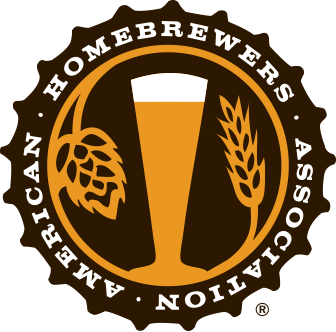Every Style Challenge: Belgian Dark Strong Ale
DOWNLOADThis week we try our ESC German Wheat Ale and a listener's Mead. We then dive into the Belgian Dark Strong Ale Category. Batch Size 1 Gallon Ingredients 1lb 8oz (24oz) bottle of Orange Blossom Honey 1 Gallon of Spring water (NOT RO or Distilled) 1 Campden Tablet 1/2 TSP Yeast Energizer 1 TSP Yeast Nutrient 1 TSP Bentonite 1 Packet of either Red Star “Montrachet” or Red Star “Pasture Red” dry yeast. 1/2 TSP Potassium Sorbate (optional but required if you plan to sweeten after fermentation) 1/8 TSP Potassium Metabisulphite (optional but required if you plan to sweeten after fermentation) Steps taken: 1. Fill a small pot with warm water (not from the gallon listed above) to no warmer than 90 degrees. Carefully sit your container of honey into the warm water bath. This will warm up the honey making it easier to mix with the water and other ingredients later. The reason for not exceeding 90 degrees is to prevent delicate flavor and aroma compounds. 2. In a container/fermentor of suitable size for your batch, that has been sanitized, (I use a glass little big mouth bubbler) add (1) one crushed Campden tablet. The Campden tablet acts as a sterilant, some people choose to skip this step. (1/2 TSP) of Yeast Energizer. This acts like a cup of coffee for the yeast, helping it wake up. It also can be added to other batches of beer or mead that have become stuck, fail to finish fermenting. (1 TSP) of Yeast Nutrient. Mead is mostly all fermentable/sugar. The Yeast Nutrient helps keep the yeast healthy. Just like us, yeast does not do well on a diet of 100% sugar. (1 TSP) of Bentonite. The Bentonite acts as a clarifying agent. During fermentation a slight static charge is created helping the yeast flocculate, fall out of suspension, when fermentation is complete. 3. Pour a small amount of the water from the 1 gallon, from the ingredient list, to the container. Swirl it around, or stir with a sanitized spoon to mix up the items from step 2. if the Campden tablet is not mixed it well, it will not work as a sterilant properly. 4. Fill the container/fermentor to a maximum of 1/2 of the water to the container/fermentor to aid in the getting the honey evenly mixed in. 5. Slowly begin adding the honey to the container/fermentor either stirring with a sanitized spoon or swirling the container/fermentor around as you go. 6. Once all of the honey has been added, take some of your remaining water for the batch rinse as much of the honey that is stuck in the bottle out and into your container/fermentor. 7. Top up your batch to the one gallon mark. At this point you would think you should pitch the yeast, but refrain from doing so. The Campden tablet that was added will kill off the yeast you would add. The ingredients in the Campden tablet that act to sterilize the must (unfermented wine/mead) will naturally dissipate in 24 hours. 8. If Campden tablets were not used, skip ahead to the next step. Cover the top of your container/fermentor with a paper towel and let sit for 24 hours. 9. Pitch your yeast, add your airlock, and move to a suitable environment for it to ferment. Gently rock the fermentor about once every couple days. This will help off-gas the batch. In my experiences, Mead ferments better when it is off-gassed, as well as aides in clarification. Off-gassing is a process of getting CO2 out of solution. 10. Once fermentation is complete, take gravity readings to be sure, rack your mead to secondary. 11. If you plan on sweetening your mead. add the Potassium Metabisulphite, which will kill off any yeast left in your mead. Add the Potassium Sorbate, which will stablize your mead as well as preventing the mead from re-fermenting your sweetening addition. At this point I also added 1/8 TSP of liquid oak essence. I prefer this over oak chips or spirals, because it is too easy to get too much oak flavor into your mead. 12. Let sit at the least 2 weeks in secondary before bottling.














